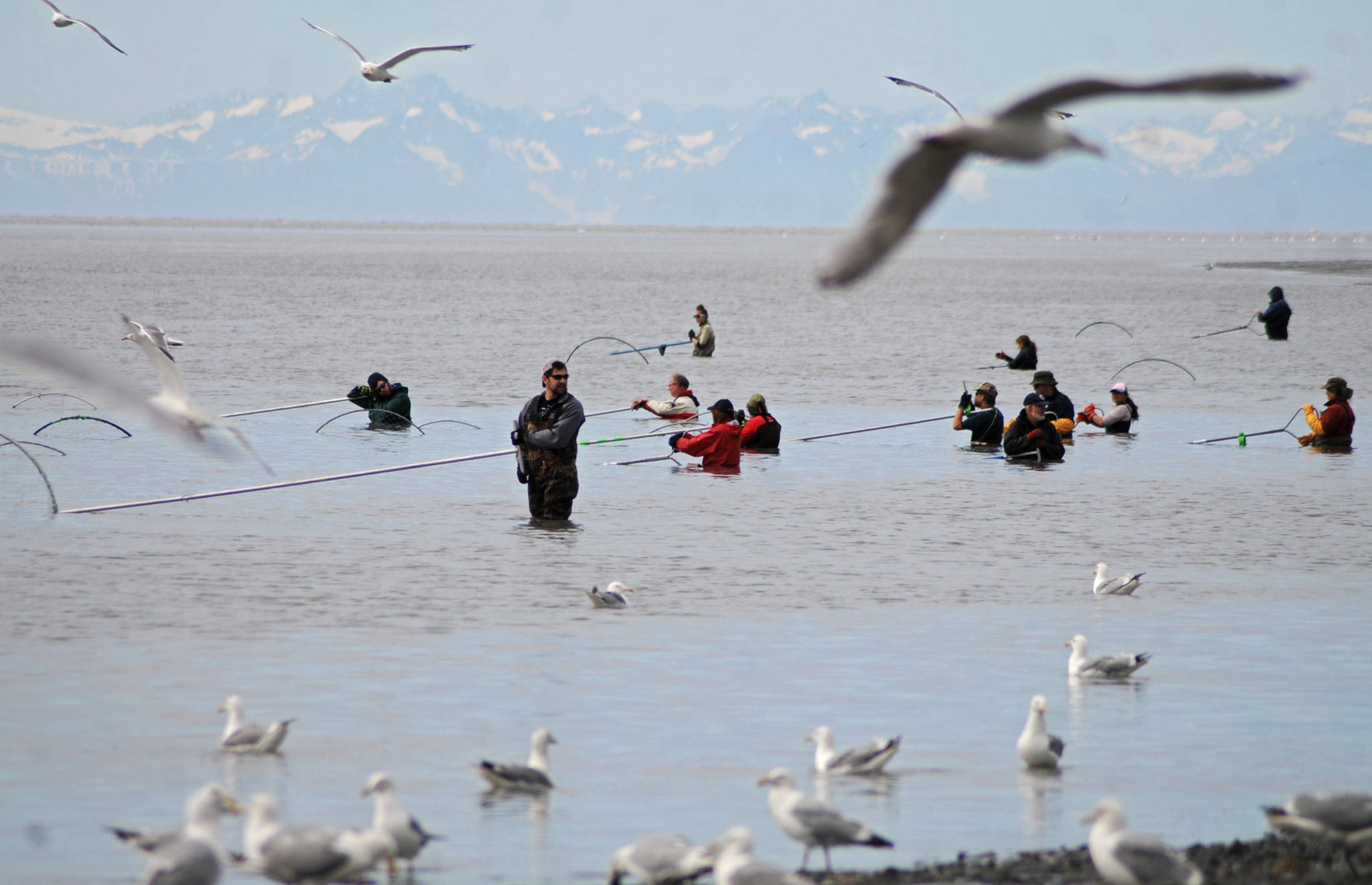Scientists will be sampling water on Kenai’s beaches to see if efforts to reduce fecal coliform and enterococci bacteria have been working.
Fecal coliform and enterococci grow in the intestines of warm blooded animals, and while not dangerous themselves are often found alongside more harmful pathogens. The two bacteria have for several summers exceeded the Alaska Department of Environmental Conservation’s standards there. DEC monitored the two bacteria species in the water near the Kenai beaches annually from 2010–2014 and found frequent exceedences there, but only rarely upstream near the Warren Ames Bridge.
With the bacteria well documented, this year’s sampling will look at more detailed questions.
“The main effort in the sampling before was just to establish if the bacteria levels exceeded the impairment threshhold,” said DEC Environmental Program Specialist Jeanne Swartz. “That was job one. Then we added on, ‘What’s the source?’ That was job two. Having established those we can look at more specialized questions like tides. Before it wouldn’t have mattered so much. The exact process of how bacteria got on the beaches was at that time less of a concern.”
In 2014, employees of the conservation nonprofit Kenai Watershed Forum — who have often performed the sampling for DEC as contractors — used a technique called microbial source tracking to determine what animals were depositing the bacteria in the water. Though bacteria were found from humans, dogs, moose, caribou and seals, “it is evident that gulls are the most consistent major contributor to fecal bacteria at Kenai public use beaches,” Watershed Forum environmental scientist Jeff Sires wrote in a 2016 report to DEC.
One finding of the Kenai Watershed Forum’s analysis of sample results from 2010–2014 was that although Kenai’s south beach — where up to 10,000 gulls spend the summer in a large rookery — had higher overall bacteria counts than the north beach, there were differences in what made bacteria levels rise.
“It appears that spikes in bacteria levels at North Kenai Beach generally occur in late July,” Sires wrote. “Conversely, spikes in bacteria levels at South Kenai Beach appear to be more random.”
Kenai’s north beach sees the majority of fishing traffic during the personal-use dipnet fishery from July 10-31.
“They (gulls) are attracted to the beach because of a fairly unnatural food source,” said Kenai Watershed Forum environmental scientist Branden Bornemann. “All these salmon carcasses wouldn’t normally be there. And the gulls are what we’re seeing is the highest bacteria input into these samples.”
In 2013, Kenai’s city government began requiring dipnetters to either toss fish waste into the water or otherwise remove it from the beach, with a $150 fine for littered carcasses. Then-Police Chief Gus Sandahl wrote in the city’s dipnet report from that year that enforcement officers “saw very few carcasses on the beaches and they did not see anyone disposing of fish waste incorrectly.”
“As a result, there were no citations issued for the illegal deposit of fish waste,” Sandahl wrote. “(Enforcement officers) received regular compliments and thanks from dipnetters in regards to how clean the beaches were.”
DEC paused bacteria sampling in 2014, in part because of the new policy.
“We wanted to give that effort some time to get underway,” Swartz said. “… We’ve been focused on remediation effects, management practices, and outreach the last couple of years — giving it time to get established, and then going back this year to see if we were sucessful in reducing the bacteria amounts. We felt it was money better spent than to continue getting a little information every year.”
Whether the policy’s reduction of fish waste led to a reduction in seagull visits, and therefore a reduction in bacteria deposits, is a question researchers will consider.
Several of the past samplings were funded with grants passed from the U.S Environmental Protection Agency through DEC to Kenai’s city government, which contracted the work to the Kenai Watershed Forum. After the Kenai City Council approved this year’s total $49,743 grant on Wednesday, Bornemann said the nonprofit plans to gather the first samples within a few weeks and continue until September.
In December 2017 DEC announced plans to designate the Kenai River’s lower 7.5 miles as an “impaired water body” that doesn’t meet state water quality standards. Though the river’s turbidity was a major reason, it also exceeded standards for bacteria and showed elevated levels of copper and zinc pollution. In May, DEC program manager Nancy Sonafrank told members of the Kenai River Special Management Area that the listing for bacteria “may help improve the case for funding things that may reduce the bacteria levels and the contact people have with water containing the bacteria.”
Because DEC has no authority over animal-caused contamination, Swartz said efforts to reduce the bacteria would focus on the dipnet.
“Theoretically we would like to see bacteria counts below our state standards in that area,” Swartz said. “We’re sort of realistic in hoping we just see the counts go down a lot, so even if they’re exceeding the state standards we’re not seeing the big spike we’ve seen in dipnet season, so we can make a case that the human-caused bacteria counts have been addressed.”
She said bacteria on Kenai’s beaches haven’t led to any reported cases of sickness.
“We haven’t seen anything documented and we haven’t heard anything anecdotally, but we’re always on the lookout,” Swartz said. “I think it’s certainly possible it might have happened, but we don’t know.”
Reach Ben Boettger at bboettger@peninsulaclarion.com.

